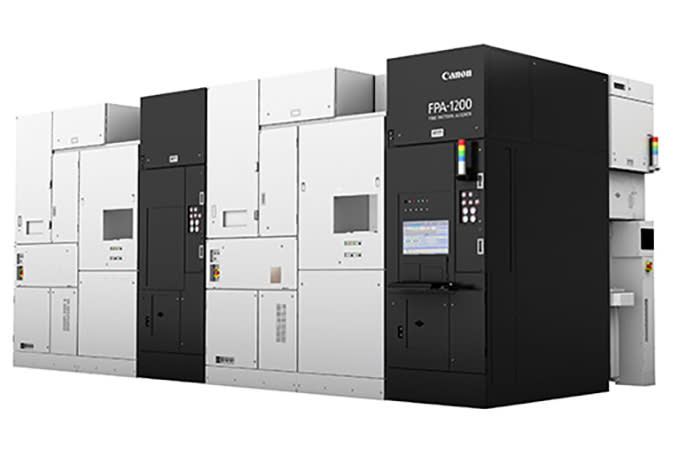New 'stamping' chipmaking technique uses 90% less power than EUV — Canon to ship the first nanoimprint litho tools to customers this year or next

Last year, Canon introduced its first nanoimprint lithography (NIL) tool, which could compete against ASML's extreme ultraviolet (EUV) and advanced deep ultraviolet (DUV) litho systems. This week, the company said that the first customers are set to receive the first NIL machine this year or next, though this will be used for trial runs, reports Financial Times. The new machines work by stamping an imprint onto the wafer, rather than etching on features with typical lithography techniques, and purportedly uses 90% less power than competing EUV machines from industry stalwart ASML.
The head of Canon's Optical Products Operations, Hiroaki Takeishi, told the Financial Times that he is keen for Canon to start shipping those machines in 2024 and 2025. The unique technology will enable the creation of simple, low-cost, cutting-edge chips.
Canon's nanoimprint lithography technology, which has been in development for over 15 years, offers a new approach to chipmaking by stamping chip designs directly onto silicon wafers. This radically different method stands in contrast to traditional DUV and EUV lithography technologies that rely on lasers and resists and promises to be significantly cheaper and more energy-efficient. In fact, Canon goes as far as saying that its NIL tool uses up to 90% less power than ASML's EUV tools. Also, NIL can be used to build chips on a 5nm-class process technology today, and eventually, it could evolve to 2nm-class nodes, the company says.
Canon says its strategy with its nanoimprint lithography machines is not to replace DUV and EUV tools from fabs but rather to co-exist with existing tools. If not for logic chips, NIL could be used to make 3D NAND, according to Financial Times.
The introduction of Canon's nanoimprint lithography comes at a time when the demand for lithography systems is high. Furthermore, NIL potentially offers cheaper tools and cheaper chipmaking. As a result, Canon's entry into the leading-edge fab tools market could potentially disrupt the current status quo when ASML is the indisputable lithography leader.
However, because NIL is incompatible with both DUV and EUV, its insertion into current design flows is complicated, to say the least. Meanwhile, it is unclear whether it is possible to develop a fabrication process that can rely solely on nanoimprint lithography. As a result, the success of Canon's nanoimprint lithography is not guaranteed, as it faces skepticism from industry analysts.
"If nanoimprint technology was a superior technology, I think it would have been up and running by now and in the market in volume," said Richard Windsor, the head of research company Radio Free Mobile, in a conversation with Financial Times.

